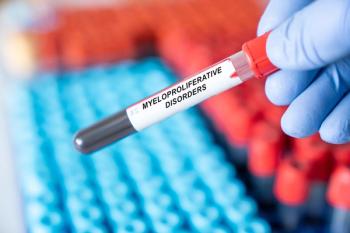
Telehealth Model Reduces Hospital Admissions in COPD
Key Takeaways
- Remote interventions reduced hospital readmissions by over 50% in COPD patients, highlighting their potential to disrupt frequent exacerbation cycles.
- Significant improvements in quality of life were observed in the intervention group, particularly in physical functioning and role limitations.
Remote care reduced readmissions and improved functional outcomes in COPD in a recent study.
Multifaceted remote interventions had a significant impact on patient outcomes in
The study enrolled 80 patients diagnosed with COPD, with participants randomly assigned to either a control group (n = 40) that received standard care without follow-up or an intervention group (n = 40) that received a comprehensive home-based program integrating weekly telecounseling and individually tailored breathing exercise training. Researchers examined how these methods influenced repeated hospitalizations and overall quality of life in individuals with COPD.
Hospital admissions were reduced by more than 50% in the intervention group (P < .001), highlighting the potential of structured home-based care to break the cycle of frequent exacerbations in COPD. While the control group had a mean number of 3.26 (±1.29) readmissions during the 12-week study, the intervention group reported a mean number of only 1.51 (±0.77) hospital readmissions during the same timeframe.
In addition to fewer readmissions, the intervention group showed a statistically significant improvement in SF-36 Quality of Life Scale scores. Meaningful gains were observed across multiple domains, including physical functioning, role limitations due to physical health, energy/vitality, and general health perception (P < .05). For example, the physical functioning score for the intervention group increased from a baseline average of 29.5 to 41.7, while the control group declined slightly from 24.6 to 21.0 during the 12-week study.
The physical role difficulty score increased from a mean of 6.25 to 44.08 in the intervention group, while the control group only increased from 5.63 to 7.05. Similarly, emotional role difficulties improved from 5.0 to 41.23 in the intervention group but remained virtually unchanged in the control group (3.33 to 5.98). However, a significant difference in mental health and social functioning subdimensions was not observed between the 2 groups.
"These findings suggest that telecounseling-based home monitoring, counseling, and exercise training are effective in improving quality of life and reducing hospitalizations in individuals with COPD," the authors concluded.
Unlike high-tech telemonitoring systems, the program relied on accessible materials such as printed tracking sheets and routine phone calls. Given its simplicity and low cost, this approach holds significant potential for broader use, especially in rural or underserved communities where internet access and digital literacy may be limited.
The intervention group began with 2 in-person training sessions on diaphragmatic and pursed-lip breathing until patients could perform the techniques independently, followed by printed educational materials and a 12-week printed tracking chart. Patients used this chart to document their daily exercises, which increased in intensity every two weeks. Researchers used telecounseling calls that lasted between 10 to 15 minutes to assess exercise adherence.
COPD remains a major global health burden, affecting more than 300 million people worldwide and accounting for an estimated 3 million deaths annually, according to the Global Initiative for Chronic Obstructive Lung Disease (GOLD).2 In addition, COPD is associated with frequent hospitalizations, diminished functional capacity, and poor quality of life. Despite pharmacologic therapies, many patients experience a cycle of acute exacerbations and progressive physical decline. Studies suggest that pulmonary rehabilitation can reduce COPD symptoms, increase exercise tolerance, and decrease exacerbations.3-5 For these reasons, it is recommended as a complementary component to standard medical therapy.
Looking ahead, the researchers recommend that future studies investigate the long-term effects of this intervention and explore how telehealth-based strategies can be refined and expanded to support a broader range of patients, including those with other chronic respiratory diseases.1 For now, the study offers compelling evidence in support of remote care; as the authors note, "it can be recommended that nurses caring for individuals with COPD should perform home-based exercise practices with telecounseling methods to reduce recurrent hospitalizations and improve the quality of life of these individuals."
References
1. Köksal N, Durgun H. Impact of telecounselling, home monitoring and exercise on hospital readmissions and quality of life in chronic obstructive pulmonary disease: a randomized controlled trial. Int J Nurs Pract. 2025;31(3):e70021. doi:10.1111/ijn.70021
2. Global strategy for prevention, diagnosis and management of COPD: 2023 Report. Global Initiative for Chronic Obstructive Lung Disease (GOLD). 2023. Accessed June 18, 2025.
3. Spruit MA, Burtin C, De Boever P, et al. COPD and exercise: does it make a difference?. Breathe (Sheff). 2016;12(2):e38-e49. doi:10.1183/20734735.003916
4. Choi JY, Kim KU, Kim DK, et al. Pulmonary rehabilitation is associated with decreased exacerbation and mortality in patients with COPD: a nationwide Korean study. Chest. 2024;165(2):313-322. doi:10.1016/j.chest.2023.09.026
5. Zhang H, Hu D, Xu Y, Wu L, Lou L. Effect of pulmonary rehabilitation in patients with chronic obstructive pulmonary disease: a systematic review and meta-analysis of randomized controlled trials. Ann Med. 2022;54(1):262-273. doi:10.1080/07853890.2021.1999494
Newsletter
Stay ahead of policy, cost, and value—subscribe to AJMC for expert insights at the intersection of clinical care and health economics.













































